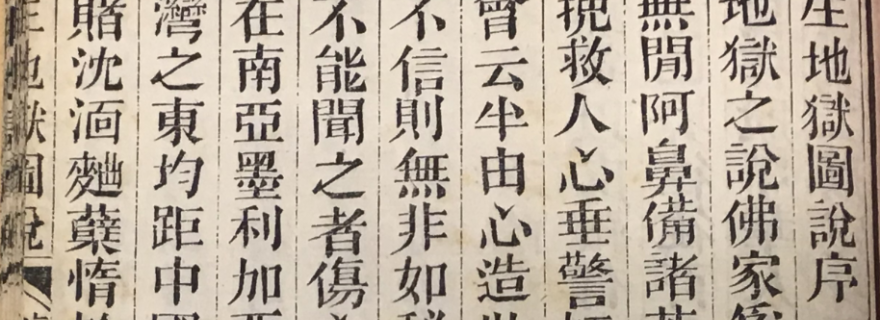The Illustrated Description of the Living Hells
Two copies of a rare and long-forgotten Chinese book are preserved in the Leiden Special Collections where they are awaiting researchers.
Published in 1875 by one of the major Cantonese publishing houses, The Illustrated Description of the Living Hells (Sheng diyu tushuo 生地獄圖說) is an unsigned pamphlet that recounts with a wealth of detail the tragedy of 250,000 Chinese contract labourers sent to Cuba and Peru in the mid-nineteenth century. It bluntly denounces the coolie trade, contending that it is a new form of slavery with a number of “Western tortures” more frightful than Chinese infernal punishments. On the basis of two international commissions, the anonymous author not only warns the people against such dangers, but also urges the Qing imperial court to rethink its foreign policy and protect nationals overseas. Never before has there been such an inflammatory text written in Chinese against the coolie traffic.
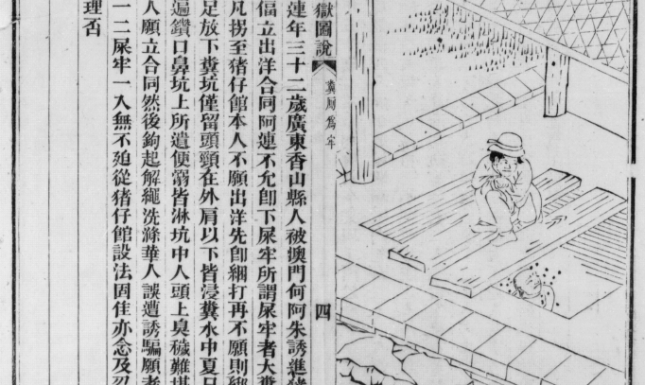

The format of the Sheng diyu tushuo is widely found in late imperial China: the illustration occupies the front of a page, and the corresponding text its back. The purpose is to maintain suspense, since the image and the story are not arranged opposite each other; on the contrary, the reader is called upon to turn the page to understand the details of the narrative, and it is at the same time that appears a new image. But the case of the Sheng diyu tushuo is also quite unique. The author took as a model the most influential “morality book” of his time, The Records and Tales of the Jade Regulations (Yuli chaozhuan玉歷鈔傳), which lists the judgments and punishments awaiting sinners in hells, and the means of escaping them through repentance. The author of the Sheng diyu tushuo adopted a similar approach to better serve his purpose and attract as wide a readership as possible: texts and illustrations vividly depict Cuba and Peru as earthy hells and explain how to avoid these terrifying lands.
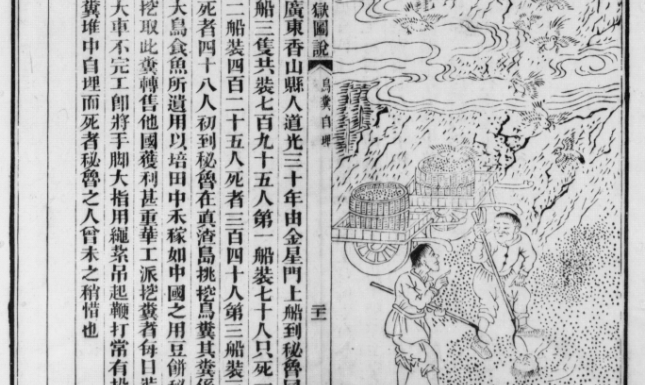

The book became a bestseller, but its success was short-lived. The ratification of treaties in the late 1870s to protect Chinese nationals in Cuba and Peru soon hindered its initial goals. Moreover, the Spanish government obtained its ban in 1877 so as to prevent anti-Western riots in China. A few copies were however saved and sent to Europe where they were recently rediscovered: three in Paris, two in Leiden, one in Munich, and one in New York (formerly in Oxford or London). Another copy unexpectedly reappeared in an auction sale in China. Unfortunately, the story of the Leiden copies is not well documented: we only know that they arrived in the Library sometime between 1886 and 1998. It can be assumed that they transited through diplomatic channels, but further research will be needed to shed light on this point.
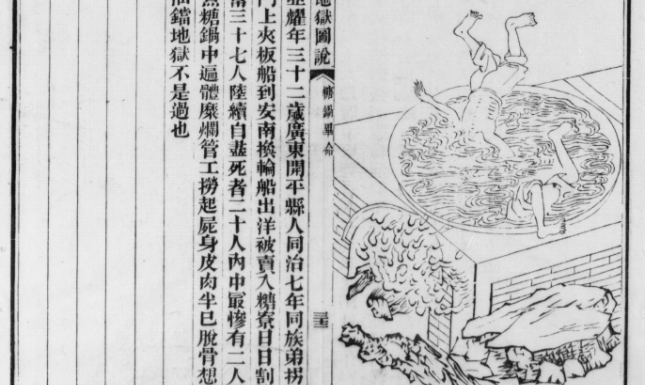

The Sheng diyu tushuo was first published seriatim in 1875, in the form of as many successive illustrated handbills as there are stories in the book. Thousands of these single sheets were gratuitously distributed in Guangzhou and Hong Kong. It was later that the whole was combined into one book, headed by the title Sheng diyu tushuo and a preface, and published in Guangzhou as a “second edition” (xinjuan新鐫). One of the Leiden copies has, however, one specific characteristic: the cover page does not mention the publishing house, Fuwenzhai 富文齋, and the paper quality differs from the other copies. Stated differently, it is a parallel edition which suggests that the book garnered a very wide readership.
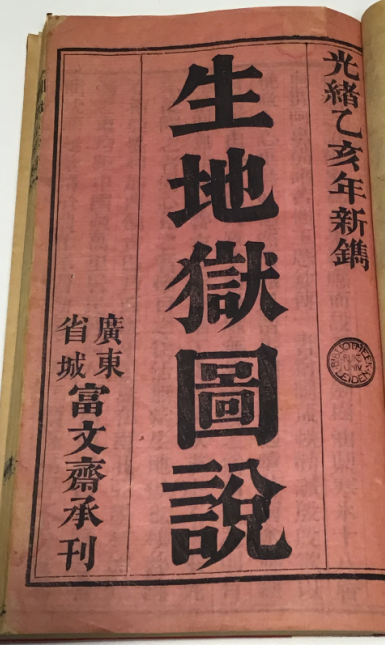

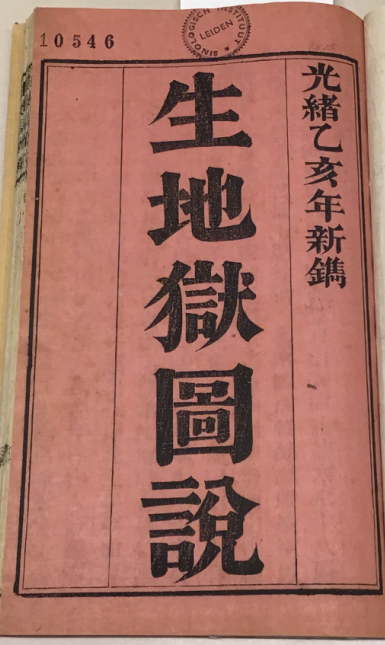

I wish to thank Marc Gilbert for his help with the Leiden copies.
Author: Pierre-Emmanuel Roux is an Associate Professor at the University of Paris (formerly Paris Diderot University) where he teaches East Asian history.
Further reading:
Roux, Pierre-Emmanuel. Les Enfers vivants ou La tragédie illustrée des coolies chinois à Cuba et au Pérou. Paris: Hémisphères, 2018.
Yun, Lisa. The Coolie Speaks. Chinese Indentured Laborers and African Slaves in Cuba. Philadelphia: Temple University Press, 2008.


